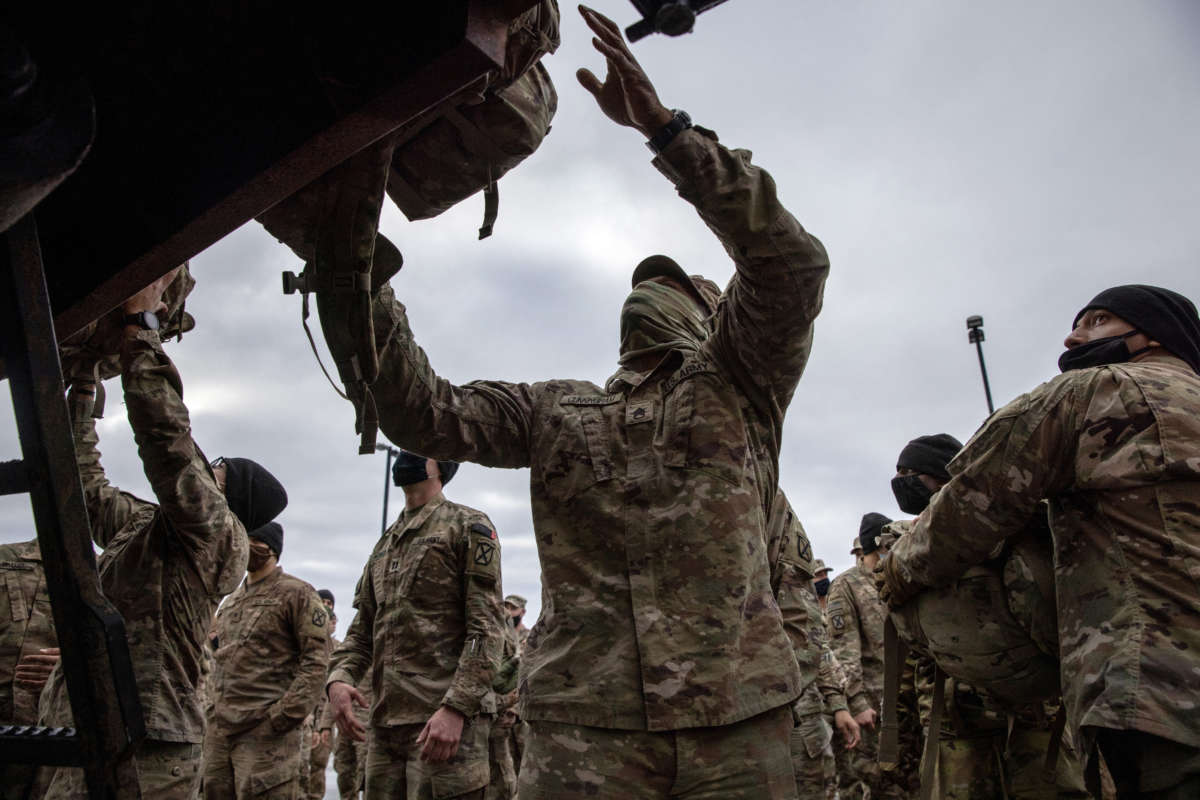President Joe Biden is expected to announce on Wednesday the withdrawal of U.S. troops in Afghanistan, bringing to an end almost 20 years of U.S. occupation in the country, albeit with some potential caveats.
Sources with knowledge of the plan for the withdrawal, speaking anonymously to The Washington Post, said Biden’s goal is to begin a phased withdrawal of the 2,500 remaining troops in Afghanistan over the course of the next few months. By September 11, 2021 — the 20th anniversary of the attacks in New York, Washington D.C. and Pennsylvania that led to former President George W. Bush starting the war in Afghanistan in the first place — there will purportedly be “zero troops” from the United States in that country.
Left unclear, however, is whether troop withdrawal will include removing hundreds of special operations forces that are in the country as well, which aren’t part of the official count of troop presence there. Biden has, in the past, indicated a preference for keeping special forces in the region, while also using surveillance and drone attacks to keep a U.S. military presence in Afghanistan.
The goal to remove U.S. troops from the country also goes beyond a deal negotiated between the Trump White House and the Taliban, which promised to have the troops out by May 1. Biden acknowledged last month that that promise would likely go unfulfilled, but in the same breath said that a military withdrawal would happen soon.
“We are not staying for a long time. We will leave,” Biden said in March. “The question is when we leave … it’s going to be hard to meet the May 1 deadline just in terms of tactical reasons.”
By making a promise to leave by September 11, the Biden administration hopes to honor the spirit, if not the letter, of the previously negotiated withdrawal plans.
“If we break the May 1st deadline negotiated by the previous administration with no clear plan to exit, we will be back at war with the Taliban, and that was not something President Biden believed was in the national interest,” a source familiar with the plan told the Post.
Failure to withdraw sooner wasn’t necessarily entirely Biden’s fault. Former President Donald Trump campaigned in 2016 on leaving Afghanistan. In 2020, his White House negotiated a plan to do so with the Taliban, on the condition that the group would sever its remaining ties with al-Qaeda in the region. But when Biden came into office, there were no logistics set in place to begin the withdrawal of troops within the May 1 timeframe that Trump had promised.
More than 2,000 U.S. troops, and at least 100,000 Afghan civilians, have died in the 20 years that the U.S. has occupied the country. The war has also cost more than a trillion dollars in spending.
Military operations have continued throughout that entire time — in 2019 alone, the U.S. dropped more than 7,000 bombs and other munitions in the country.
Our most important fundraising appeal of the year
December is the most critical time of year for Truthout, because our nonprofit news is funded almost entirely by individual donations from readers like you. So before you navigate away, we ask that you take just a second to support Truthout with a tax-deductible donation.
This year is a little different. We are up against a far-reaching, wide-scale attack on press freedom coming from the Trump administration. 2025 was a year of frightening censorship, news industry corporate consolidation, and worsening financial conditions for progressive nonprofits across the board.
We can only resist Trump’s agenda by cultivating a strong base of support. The right-wing mediasphere is funded comfortably by billionaire owners and venture capitalist philanthropists. At Truthout, we have you.
We’ve set an ambitious target for our year-end campaign — a goal of $205,000 to keep up our fight against authoritarianism in 2026. Please take a meaningful action in this fight: make a one-time or monthly donation to Truthout before December 31. If you have the means, please dig deep.
